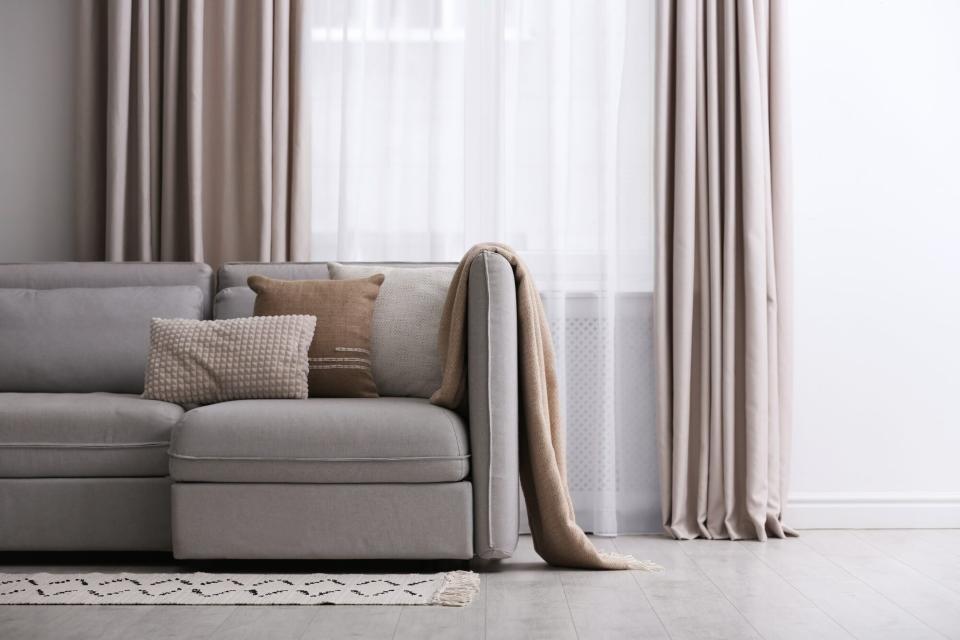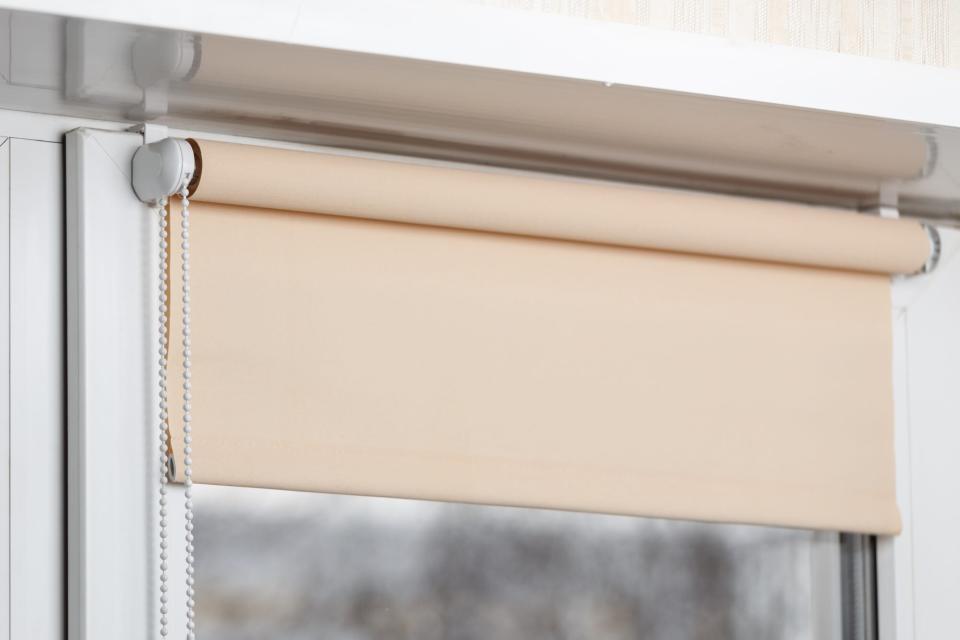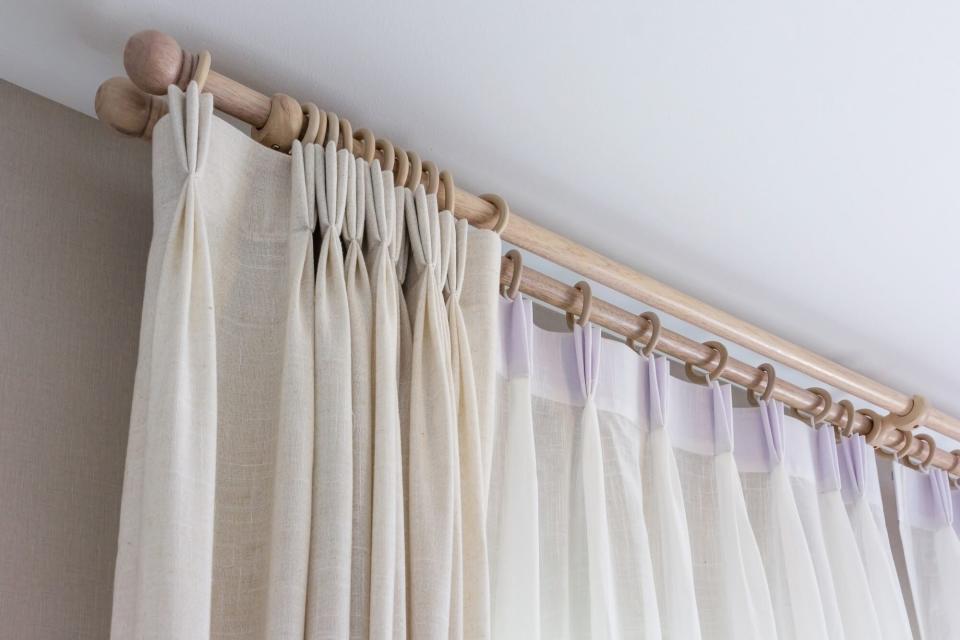How to Clean Blinds, Shades, and Curtains the Right Way
TABLE OF CONTENTS
On This Page
Frequency of Cleaning
Materials Needed
How to Clean Blinds
How to Clean Shades
How to Clean Curtains
When it comes to routine household cleaning, window treatments are often overlooked. But just like other areas of your home, blinds, curtains, and shades can be a collection site for dust and dirt. Not only does regular upkeep of your window treatments reduce unwanted allergens in your house, it also enhances their appearance and longevity.
While it may sound time consuming, often all your window treatments need is a quick vacuum or dusting to restore their original beauty. Sometimes, though, a deeper clean is necessary—but even in those instances, cleaning blinds, curtains, and shades is a manageable household task.

GETTY IMAGES
Related: What Is the Best Way to Clean Your Baseboards?
How Often You Should Clean Window Treatments
There are a few different factors that dictate how often you should clean your window treatments. "The material, design, and orientation of your window treatments, as well as how quickly dust accumulates in your home, will determine how frequently you need to do basic cleaning," says Mary Gagliardi, in-house scientist and cleaning expert for Clorox.
In general, dusting and vacuuming should occur as often as you clean your home, while deep cleaning is typically only necessary once a year. Some window treatments are machine washable, so always check the manufacturer's label for guidance before getting started.
Materials Needed
Make sure you have these tools on hand before you tackle this household chore. The materials may vary depending on what type of window treatment you're cleaning.
Vacuum with upholstery attachment
Feather duster
Mild soap
Mild detergent
Epsom salt
Soft towel or sponge
Wood spray polish
Bucket

GETTY IMAGES
How to Clean Blinds
Hard window coverings typically composed of cascading slats, blinds can be cleaned a few different ways depending on the kind you have. Generally, though, the steps don't change much from type to type. "When it comes to most kinds of blinds, the feather duster is your friend," says John Weinstock, executive vice president of Graber Blinds.
Wood Blinds
Wood blinds with painted and stained finishes should be cleaned on a monthly basis with a feather duster. "Never use water on these types of blinds," Weinstock says. For their annual deep clean, follow the steps outlined below.
Lower the blinds until they're fully extended.
Adjust the slats so they're tilted slightly open.
Use a feather duster to dust each slat.
Apply a wood spray polish to a soft cloth and wipe each slat clean.
Faux Wood Blinds
Like real wood blinds, faux wood iterations can be routinely cleaned by wiping each slat with a feather duster. The steps vary when it comes to deep cleaning, as faux wood can be cleaned with water.
Follow steps 1 through 3 outlined above.
Lightly vacuum blinds with the upholstery attachments.
Spot clean with a soft cloth or sponge, using mild soap and warm water as needed.
Open the slats and let the blinds air dry.
Vinyl and Aluminum Blinds
Vinyl and aluminum blinds are a popular choice in many homes. Whether they're vertical or horizontal, these window treatments can also be routinely cleaned with a feather duster once monthly and deep cleaned annually.
Follow steps 1 through 3 outlined above.
Lightly vacuum blinds with the upholstery attachment.
Spot clean with a soft cloth or sponge, using mild soap and warm water as needed.
Open the slats and let the blinds air dry.

GETTY IMAGES
How to Clean Shades
Cellular Shades
Sometimes called honeycomb shades, cellular shades are window treatments that resemble an accordion when they're raised and lowered. "You should not use spot removers or strong soaps and be careful not to crush or wrinkle the fabric," says Weinstock.
Pull the shades down and lightly dust or vacuum with the upholstery attachment.
Using a soft cloth with mild soap and warm water, spot clean the shades by wiping gently in the direction parallel to the fabric's pleats.
Allow shades to air dry completely before raising them.
Roman Shades
There are a handful of roman shade varieties, from flat and pleated to ones with ties and swags. "For tailored Roman shades that need thorough cleaning, it is best to go to an experienced professional," says Weinstock. "Not all dry cleaners know how to clean shades safely and effectively, so it is best to ask." To clean classic roman shades, follow the steps outline below.
Remove the shade from the window before cleaning.
Fully open the shade and lay the fabric on a flat surface.
Using a soft cloth with mild detergent and warm water, spot clean the shades.
Allow shades to air dry completely before raising them.
Panel Shades
A stylish alternative to traditional blinds and shades, panel shades are commonly used to add privacy to large windows and glass doors. This type of window treatment should be cleaned monthly, and deep cleaned annually. The care guidelines for panel shades are also applicable to roller shades.
Pull the shades down and lightly vacuum with the upholstery attachment.
Using a soft cloth with mild soap and warm water, spot clean the shades.
Allow shades to air dry completely before raising them.

GETTY IMAGES
How to Clean Curtains
For curtains, it's especially important to read the label prior to cleaning. "Some fabrics must be dry cleaned either because of the material or because of the construction," says Gagliardi. "People need to follow the manufacturer's instructions for care to properly maintain the dimensional stability and appearance of their fabric window treatments."
Sheer Curtains
Sheer curtains have a specific fabric construction that allows them to filter light. "Since this is delicate fabric, start by washing them by hand to prevent snagging," says Vera Peterson, president of Molly Maid, a Neighborly company.
Using the upholstery attachment on the vacuum, work in sections starting at the top of the curtain. Pull the fabric taut as you work to get the entire panel clean.
Fill a bucket with cold water and mild detergent. Submerge one panel at a time and let it soak for 10 minutes.
Swirl the panel around, drain, and refill the bucket with cold water and rinse until all soap residue is gone.
To restore their crisp feel, submerge the freshly washed panel in a sink of cold water with one cup dissolved epsom. Let soak for 10 minutes.
Gently press the water out of the panel, but do not rinse.
Hang the curtain to dry before placing it back on the curtain rod.
Cotton Curtains
Cotton curtains typically can withstand machine washing, but always be sure to check the care tag prior to cleaning.
Using the upholstery attachment on the vacuum, work in sections starting at the top of the curtain. Pull the fabric taut as you work to get the entire panel clean.
Remove curtains from rod.
Remove any hardware, including clips, hooks, and sewn on rings.
Select the delicate cycle and the water temperature recommended on the care label.
Use a free and clear liquid laundry detergent.
Select an extra rinse, if possible.
After wash cycle is complete, iron the curtains to dry them.
Reattach hardware and re-hang curtains.
Silk Curtains
Silk curtains should only be cleaned at home using a vacuum with the upholstery attachment. "Spot cleaning with water, club soda, soaps, or cleansers is not recommended," says Weinstock. If your silk curtains require a thorough cleaning, it's best practice to have them cleaned by experienced professionals.

